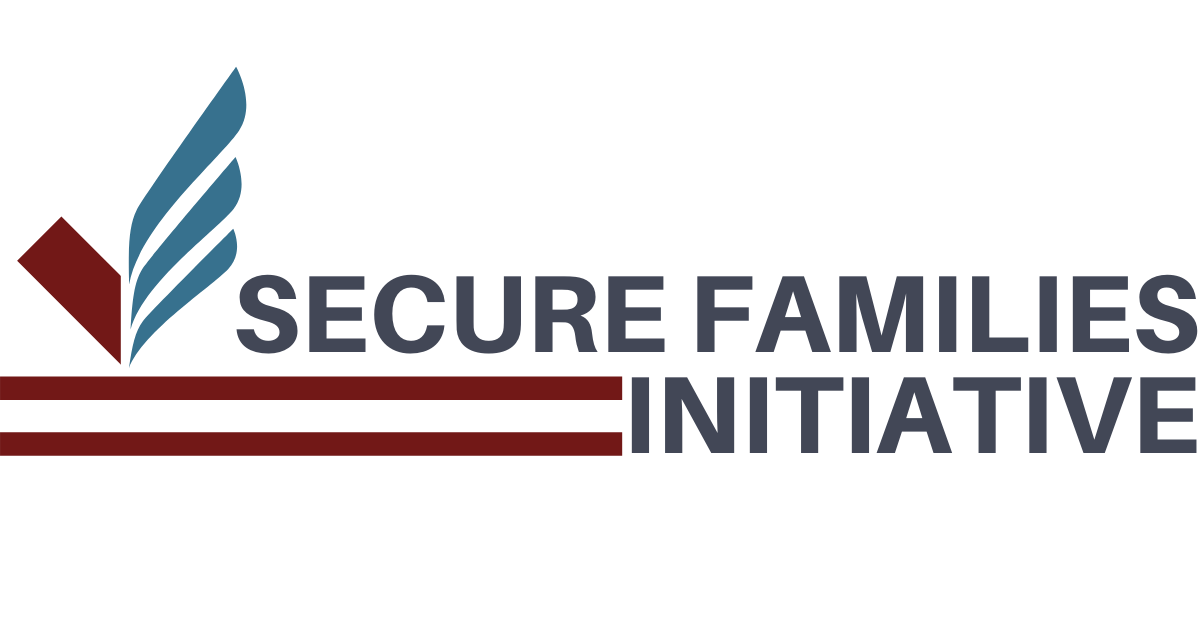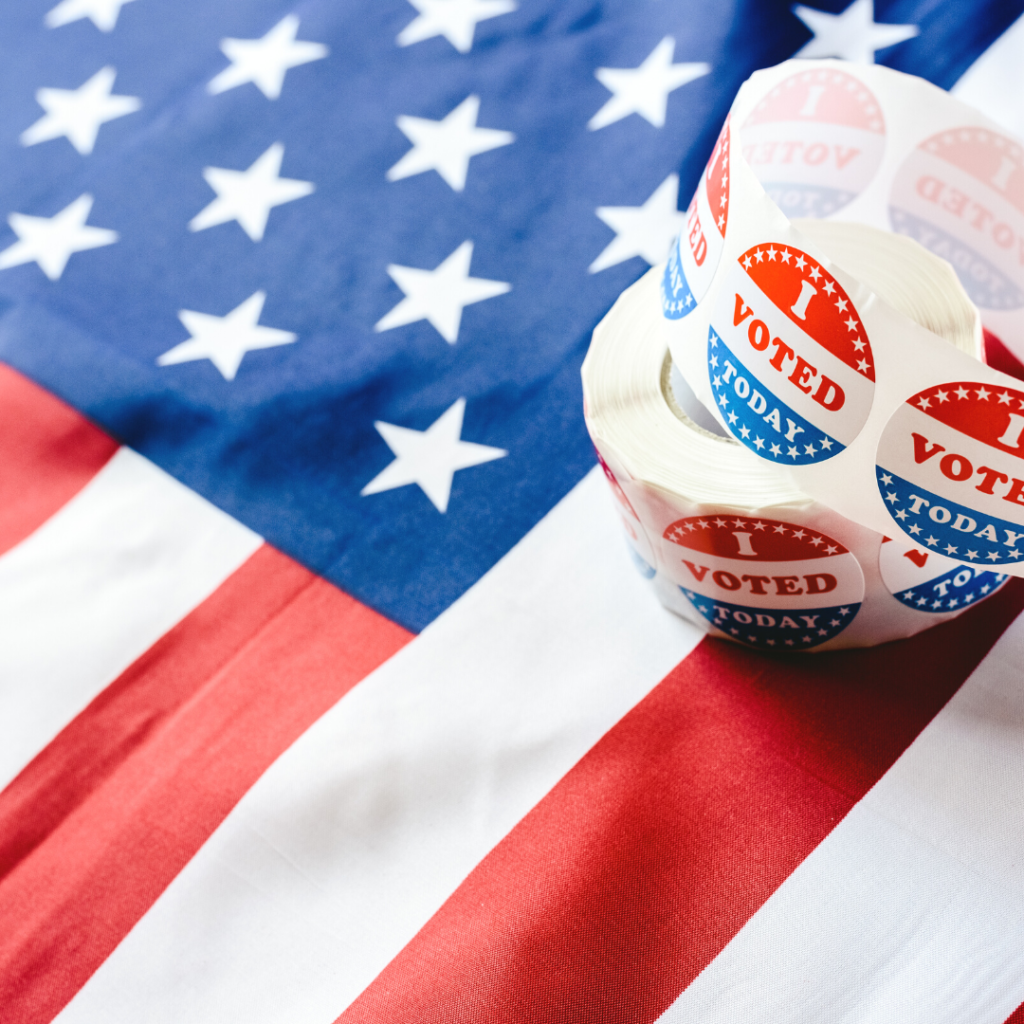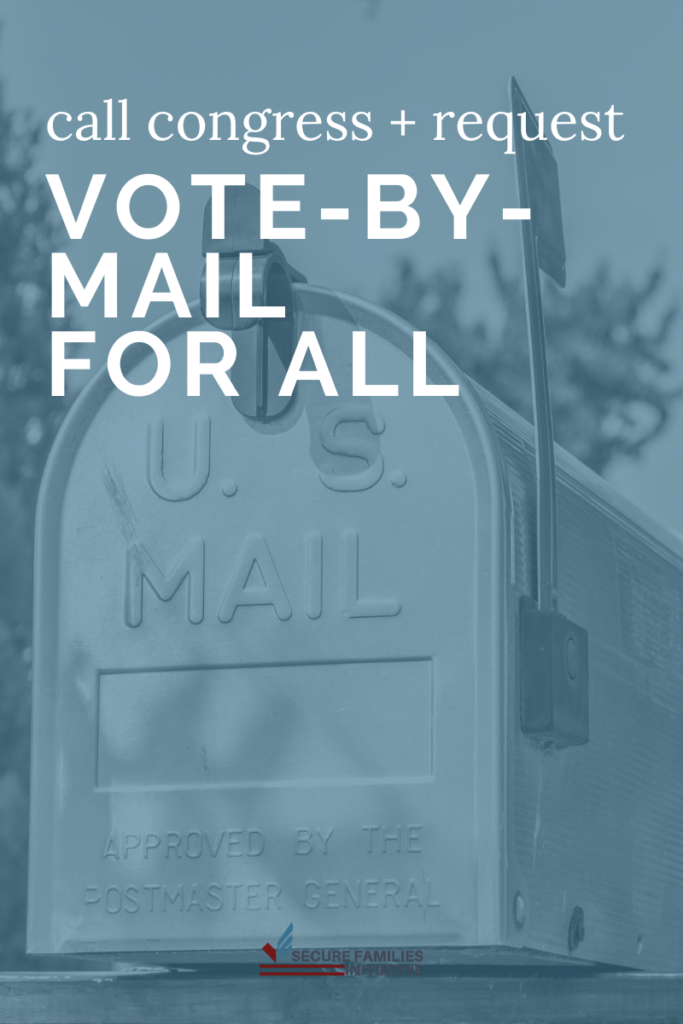Military and military family voters are no stranger to casting a ballot by mail. But the global Coronavirus pandemic has brought the importance of vote-by-mail into clear focus. Unfortunately, the discussion around the importance of a safe, vote from home option has been mired by fears of voter fraud.
At Secure Families Initiative, we support vote-by-mail for all. Of course, this requires finding balance between the fear of voter fraud and safe, easy access to the constitutional right to vote.
We hope this post will serve as a resource to explain vote-by-mail, define its benefits, break down voter fraud concerns, quell fears of widespread fraud, and provide facts to rebut unsubstantiated myths.
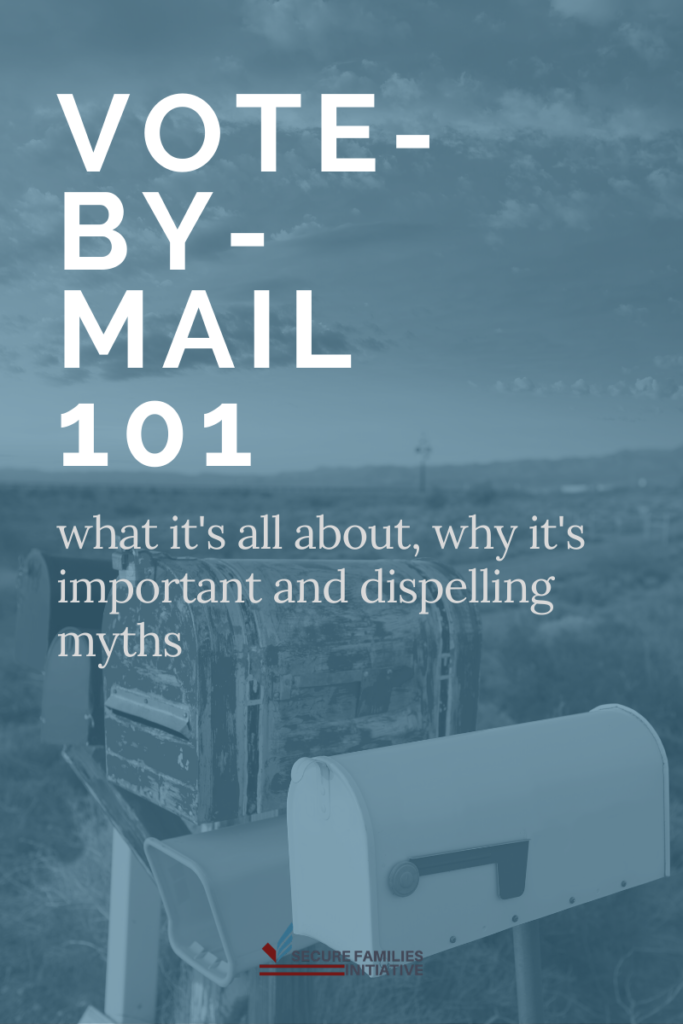
1. What is Vote-by-Mail?
The term “vote-by-mail” encompasses a wide range of voting options. NPR explains them as “all meant to offer more flexibility to voters who either want or need to cast a ballot in a location other than a polling place.”
All fifty states allow absentee voting (which is a form of voting by mail). Currently, two thirds of states permit absentee voting for any voter who requests it, and the remaining third require an “excuse” (such as military service) to receive an absentee ballot. In essence, you can think about mail-in voting as larger scale absentee voting.
Five states — Colorado, Hawaii, Oregon, Washington and Utah — already vote entirely by mail. In these states, all voters receive a ballot at the address they are registered. According to the National Conference of State Legislatures, at least 21 other states allow some smaller local elections (like school board contests) to be conducted by mail.
Voting by mail actually dates back to the Civil War but has emerged as a hot topic this year because of the Coronavirus. A number of states expanded vote-by-mail options to accommodate COVID-19 stay-at-home orders.
2. Vote-by-Mail Benefits
- Safest option: During the Coronavirus pandemic, the ability to vote at home is essential to protect from the spread of the virus. Further, many poll workers are older retirees – one of the populations most vulnerable to Coronavirus.
- Increased turnout: In the 2018 mid-term elections, the turnout for full vote-by-mail states was 10 percent higher than the rest of the nation.
- Equal access: Every single voter has the same access to cast their ballot – no waiting in line, no struggle to fit in voting before or after shift work.
- Cost effective: A 2016 study from the Pew Charitable Trusts found that, three years after Colorado went fully VBM, it cut its election administration costs by 40 percent.
- More time to consider vote: Voting at home allows more time to research and think about your vote, which may be particularly helpful for ballot initiatives and local races. You can have your laptop open right next to you!
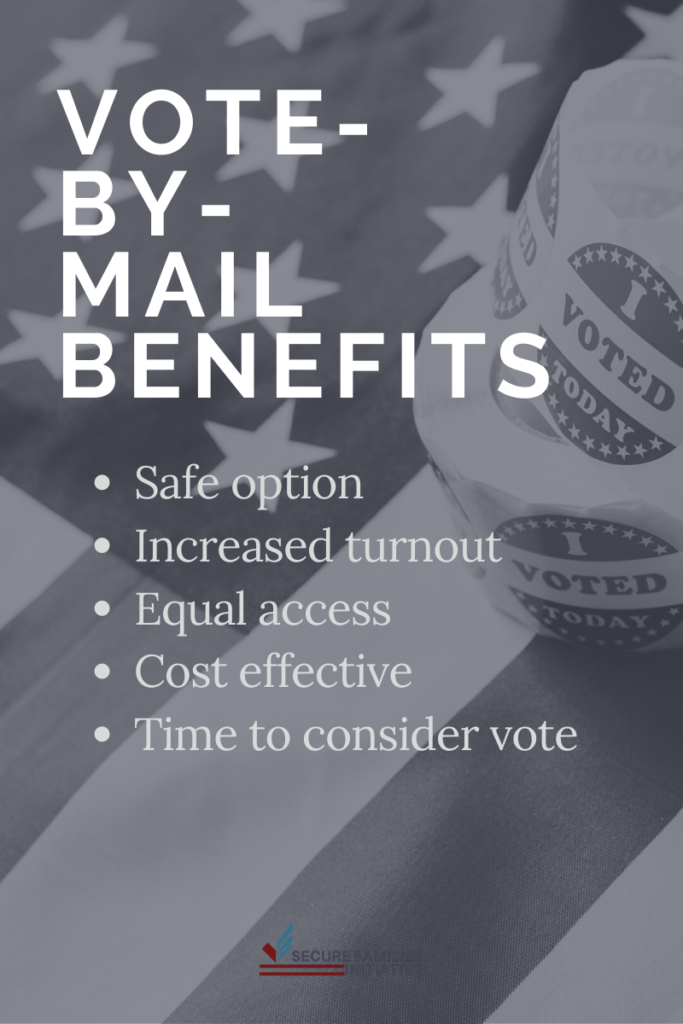
3. What is Voter Fraud?
There is no shortage of conversation on social media and the news about voter fraud, but what does that even mean?
The Brennan Center’s Voting Rights and Election Center explains: “’Voter fraud’ occurs when individuals cast ballots despite knowing that they are ineligible to vote, in an attempt to defraud the election system.”
4. Voter Fraud is Extremely Rare
- Law Professor Justin Levitt studied elections from 2000 through 2014 and found 31 instances of intentional voter fraud. Thirty-one out of more than one billion votes.
- A five-year study by the George W. Bush Justice Department “turned up virtually no evidence of any organized effort to skew federal elections.”
- There were more than 135 million votes cast in the 2016 general election and only 4 documented cases of voter fraud.
“There have been a handful of substantiated cases of individual ineligible voters attempting to defraud the election system. But by any measure, voter fraud is extraordinarily rare,” Levitt says.
In part, this is because fraud by individual voters is a singularly foolish and ineffective way to attempt to win an election. Each act of voter fraud in connection with a federal election risks five years in prison and a $10,000 fine, in addition to any state penalties. In return, it yields at most one incremental vote. That single extra vote is simply not worth the price.
Justin Levitt, The Truth About Voter Fraud
5. Dispelling Vote-by-Mail Myths
Myth: Vote-by-Mail is more susceptible to fraud
There is simply no evidence that vote-by-mail creates a greater risk for voter fraud.
Indeed, according to a database voter fraud cases, over the past twenty years there have been only 143 convicted cases of fraud by mailed ballot. The National Vote At Home Institute puts this number into perspective. “One hundred forty-three cases of fraud using mailed ballots over the course of 20 years comes out to seven to eight cases per year, nationally. It also means that across the 50 states, there has been an average of three cases per state over the 20-year span. That is just one case per state every six or seven years. We are talking about an occurrence that translates to about 0.00006 percent of total votes cast.“
Fact: States use a number of measures to ensure vote integrity
States implement a number of safeguards to protect the integrity of ballots cast by mail. Many of these techniques are also currently used by states to verify absentee ballots.
For example, in Utah, voters sign the envelope seal, and that seal must match the signature on file. If the signature doesn’t match, they contact the voter directly to verify and update the signature on file. Kirsten Rappleye, chief of staff to Utah’s Republican Lt. Gov. Spencer J. Cox (who oversees the state’s elections), said in an email to NBC News that “there is very little evidence of voter fraud within our mail-in system here in Utah.”
Washington Secretary of State Kim Wyman, a Republican, explained her state’s ballot review to NBC News. The “office carefully crosschecks ballot and voter registration signatures and uses nationwide data sets to verify voters’ identity and discern whether any fraud has occurred,” she said. “Any credible incidents of double voting are referred for prosecution.”
The review process is equally stringent in Oregon, a state that has mailed ballots to all registered voters since 2000.
In Oregon, both the absentee envelope and ballot have a barcode unique to each voter, and in the larger counties, like Marion, a machine scans for any discrepancies between the two, or any duplicate barcodes. Then, a team of election workers trained in forensic handwriting analyzes the ballot signatures to verify the identification of the voter, who has two weeks to prove her identity should the signature be contested.
During this process, “everything that is happening is on camera at all times,” says Tayleranne Gillespie, the communications director for the Oregon Secretary of State. “No one’s ever by themselves counting ballots. It’s always done in bipartisan teams.”
Spenser Mestel, Pacific Standard Magazine
Myth: Vote-by-Mail benefits one party
We’ve seen the argument – especially on Twitter – that expanded vote-by-mail will tip the election scales in favor of one party.
Fact: Vote-by-Mail does not favor either party
There is no evidence that universal vote-by-mail will favor one major political party over the other.
Robert Stein, a Rice University professor who has helped put in place vote-by-mail systems, said “[I]n the states and counties that have transitioned to all-mail voting, there has been little evidence of partisan advantage for either side because of mail voting.”
Five Thirty Eight published an article literally called, There Is No Evidence That Voting By Mail Gives One Party An Advantage, which reviews statistical research in detail. The data suggests benefits to each party balance out, leaving no statistical advantage for either.
Myth: The postal service is unreliable
If mail service is unreliable, there’s no way to feel confident your ballot will be delivered or successfully returned to be counted.
Fact: USPS is efficient and safe
Listen, no one has experienced more USPS-induced agony than a military spouse who has lived overseas for ten years, but even I trust them to deliver and return my ballot. Just as the government trusts the postal service with tax documents, economic stimulus checks, social security cards, passports, and on and on.
Many vote-at-home states also permit voters to return their ballot in person.
Bonus: The USPS Informed Delivery system allows you to digitally preview and manage your mail and packages so you’ll know exactly when your ballot is delivered to your home.
6. Take Action to Support Vote-by-Mail
Looking ahead to November, we want to make sure that no one has to risk their health and safety to cast a ballot. Now is the moment to tell Congress to fund expanded vote-by-mail systems.
As military families, we have a powerful voice on this issue. Many of us have been voting by mail for years! We can vouch for the system’s convenience and security. Join our Action to Call Congress and urge funding for Vote-by-Mail.
